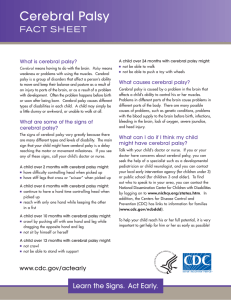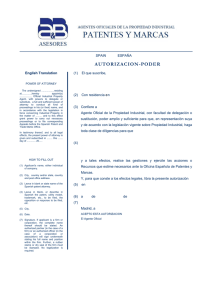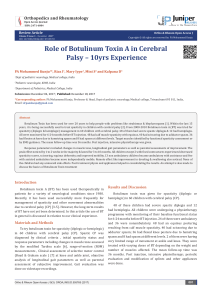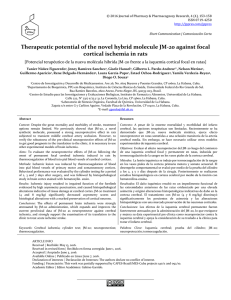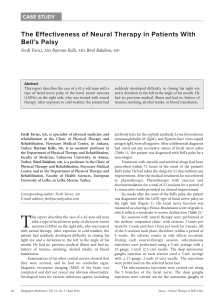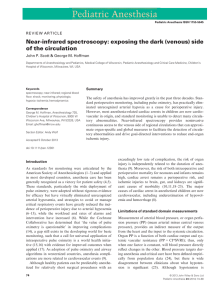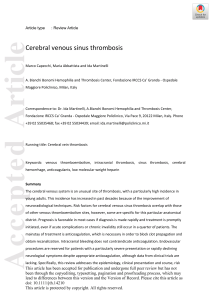Cerebral Palsy
Anuncio
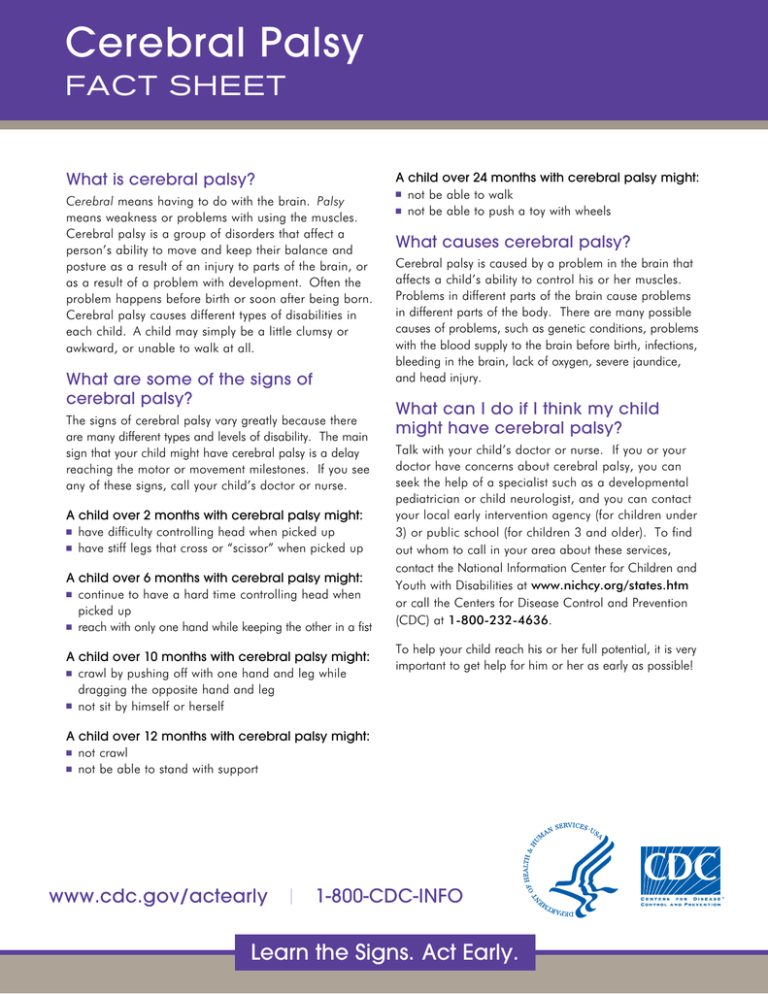
Cerebral Palsy FACT SHEET What is cerebral palsy? Cerebral means having to do with the brain. Palsy means weakness or problems with using the muscles. Cerebral palsy is a group of disorders that affect a person’s ability to move and keep their balance and posture as a result of an injury to parts of the brain, or as a result of a problem with development. Often the problem happens before birth or soon after being born. Cerebral palsy causes different types of disabilities in each child. A child may simply be a little clumsy or awkward, or unable to walk at all. What are some of the signs of cerebral palsy? The signs of cerebral palsy vary greatly because there are many different types and levels of disability. The main sign that your child might have cerebral palsy is a delay reaching the motor or movement milestones. If you see any of these signs, call your child’s doctor or nurse. A child over 2 months with cerebral palsy might: n have difficulty controlling head when picked up n have stiff legs that cross or “scissor” when picked up A child over 6 months with cerebral palsy might: n continue to have a hard time controlling head when picked up n reach with only one hand while keeping the other in a fist A child over 10 months with cerebral palsy might: n crawl by pushing off with one hand and leg while dragging the opposite hand and leg n not sit by himself or herself A child over 24 months with cerebral palsy might: n not be able to walk n not be able to push a toy with wheels What causes cerebral palsy? Cerebral palsy is caused by a problem in the brain that affects a child’s ability to control his or her muscles. Problems in different parts of the brain cause problems in different parts of the body. There are many possible causes of problems, such as genetic conditions, problems with the blood supply to the brain before birth, infections, bleeding in the brain, lack of oxygen, severe jaundice, and head injury. What can I do if I think my child might have cerebral palsy? Talk with your child’s doctor or nurse. If you or your doctor have concerns about cerebral palsy, you can seek the help of a specialist such as a developmental pediatrician or child neurologist, and you can contact your local early intervention agency (for children under 3) or public school (for children 3 and older). To find out whom to call in your area about these services, contact the National Information Center for Children and Youth with Disabilities at www.nichcy.org/states.htm or call the Centers for Disease Control and Prevention (CDC) at 1-800-232-4636. To help your child reach his or her full potential, it is very important to get help for him or her as early as possible! A child over 12 months with cerebral palsy might: n not crawl n not be able to stand with support www.cdc.gov/actearly | 1-800-CDC-INFO Learn the Signs. Act Early. Hoja informativa sobre la parálisis cerebral ¿Qué es la parálisis cerebral? Cerebral significa que tiene relación con el cerebro. Parálisis (Palsy en inglés) significa debilidad o problemas al usar los músculos. La parálisis cerebral es un grupo de trastornos que afectan la capacidad de la persona para moverse, mantener el equilibrio y la postura, como resultado de una lesión en partes del cerebro o problemas del desarrollo. A menudo ocurre antes del nacimiento o poco después. La parálisis cerebral causa diferentes tipos de discapacidades en cada niño. Es posible que unos niños se tropiecen mucho y se les dificulte caminar, mientras que otros simplemente no pueden caminar. ¿Cuáles son algunos de los síntomas de la parálisis cerebral? Los síntomas de la parálisis cerebral varían considerablemente ya que existen muchos tipos y niveles diferentes. El primer síntoma de que su hijo tiene parálisis cerebral es un retraso en alcanzar los indicadores importantes en el área motora o del movimiento. Si observa alguno de estos síntomas, llame al doctor o enfermera de su hijo. Un niño de más de 2 meses con parálisis cerebral puede: tener dificultad para controlar la cabeza cuando es levantado tener piernas rígidas que se cruzan como tijeras cuando es levantado n n Un niño de más de 6 meses con parálisis cerebral puede: n seguir teniendo dificultad para controlar la cabeza cuando es levantado n tratar de alcanzar las cosas con una sola mano mientras que la otra permanece empuñada Un niño de más de 10 meses con parálisis cerebral puede: n gatear empujándose con una pierna y un brazo mientras que arrastra la pierna y el brazo opuestos n ser incapaz de sentarse por sí solo Un niño de más de 12 meses con parálisis cerebral puede: n n no gatear ser incapaz de pararse con apoyo Un niño de más de 24 meses con parálisis cerebral puede: n n no caminar ser incapaz de empujar juguetes con ruedas ¿Qué causa la parálisis cerebral? La causa de la parálisis cerebral es un problema en el cerebro que afecta la capacidad del niño para controlar los músculos. Problemas en diferentes partes del cerebro causan problemas en diferentes partes del cuerpo. Existen muchas causas posibles como: trastornos genéticos, problemas con el suministro de sangre al cerebro antes del nacimiento, infecciones, hemorragias cerebrales, falta de oxígeno, ictericia aguda y lesiones en la cabeza. ¿Qué puedo hacer si creo que mi hijo tiene parálisis cerebral? Por favor hable con el médico o enfermera de su hijo. Si usted o su doctor piensan que podría existir algún problema, pídale al doctor que remita a su hijo a un pediatra especializado en desarrollo u otro especialista en este campo; también puede llamar a su agencia local de intervención temprana (para niños menores de 3 años) o su escuela pública (para niños de 3 años o más). Para saber con quién hablar en su área, puede comunicarse con el Centro Nacional de Diseminación de Información para Niños con Discapacidades (National Information Center for Children and Youth with Disabilities – NICHCY) a través del siguiente sitio web: www.nichcy.org/spanish.htm o llamar al 1-800-695-0285. Los Centros para el Control y la Prevención de Enfermedades (CDC por sus siglas en inglés) también tienen enlaces con información para las familias en el sitio electrónico www.cdc.gov/ncbddd/defaultspan.htm. ¡Para que su hijo alcance su máximo potencial, es de suma importancia conseguirle ayuda lo más pronto posible! www.cdc.gov/pronto | 1-800-CDC-INFO Aprenda los signos. Reaccione pronto.
